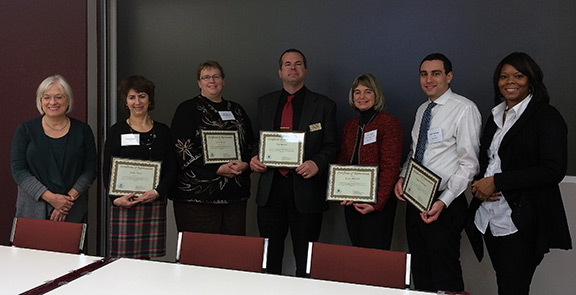This post originally appeared on Environmental News Bits.
For the last several years, the Minnesota Pollution Control Agency, through a U.S. EPA grant, has funded projects in the state that promote the use of green chemistry in industry and encourage the teaching of green chemistry and design principles in Minnesota’s colleges and universities. The case studies from these projects were recently published on the MPCA web site. Details of the project and links to the associated case studies are included below.
Green Chemistry and Design Demonstration Project
Background
Demonstration projects tested whether grants of around $50,000 can provide threshold funding to businesses to undertake green chemistry and design changes to their products, or to the components of products they deliver to customers or supply chains.
Grants co-funded basic chemistry research, moved research or development already in progress closer to completion, or adapted off-the-shelf green chemistry technology. Actual implementation of product changes through retooled production were the ideal end-result, but product design or redesign and testing with a commitment to carry the new design through to production sufficed.
Funds were awarded in the form of a grant to a company that controlled the design of a product or component and committed to a green chemistry and design improvement of such a product or component. Internal teams and external partnerships were vital and could include the company designing the product or component, their customer(s), their production supply chain, and either internal or third-party (external) technical resource providers such as consultants, graduate research students, labs or testing facilities, mentoring companies, or others.
Demonstration projects were designed to support the research and development side of the product design process. Grant funds could not be used for purchasing the equipment necessary to produce the newly designed or redesigned product. Equipment purchases could be made through state low-interest loan programs, either MPCA environmental loans or those available through other state agencies.
More information is available at http://www.pca.state.mn.us/index.php/topics/preventing-waste-and-pollution/p2-pollution-prevention/reducing-toxicity/green-chemistry-and-design/green-chemistry-and-design-demonstration-project.html.
Case Studies
Green Chemistry and Design College Curriculum Grant Projects
Background
The MPCA has been exploring the most effective means for state government to promote wider use of Green Chemistry and Design. The MPCA has pursued this exploration as part of its 22-year-old Pollution Prevention program, to arrive at both life-cycle environmental improvement and a more profitable and sustainable economy.
The MPCA is researching and evaluating a number of mechanisms for supporting broader use of Green Chemistry:
- Grants to Minnesota companies in various sectors to pursue Green Chemistry, Engineering and Design improvements in products;
- Improved multi-stakeholder networks to facilitate awareness and information exchange (including the Minnesota Green Chemistry Forum, annual Minnesota Green Chemistry conferences, and the Environmental Initiative’s Chemicals Policy stakeholder process);
- Integration of Green Chemistry information and best practices into existing State-funded assistance services;
- Broadening markets for Green Chemistry and overall greener products through State purchasing, facilitation of greener private-sector supply chains, and use of existing or new tax incentives;
- High-level State Green Chemistry initiatives and policy proposals;
- Grants and networking to strengthen Green Chemistry education.
Learning from this exploration of potential state government programs supporting Green Chemistry will be reported to the Governor and Minnesota Legislature periodically to inform future policy decisions.
These grants supported the development of Green Chemistry and Design curricula at more post-secondary institutions in Minnesota and strengthen the Minnesota and national network of post-secondary faculty teaching aspects of Green Chemistry and Design. More information is available at http://www.pca.state.mn.us/index.php/topics/preventing-waste-and-pollution/p2-pollution-prevention/reducing-toxicity/green-chemistry-and-design/green-chemistry-and-design-college-curriculum-grant-projects.html.
Case Studies

